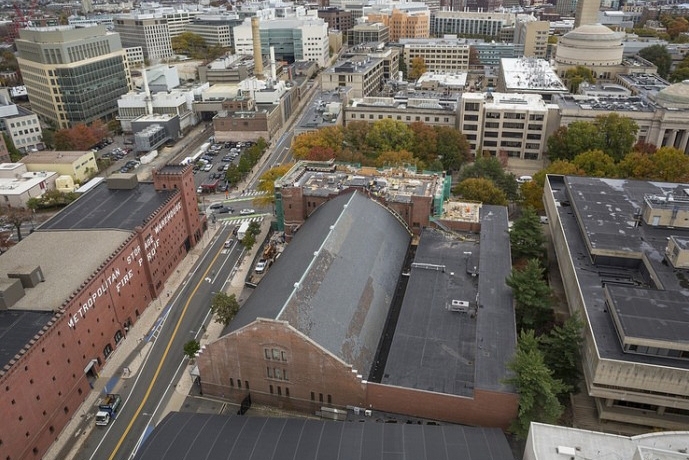MIT's Office of Multicultural Programs and LBGT Services in the Division of Student Life (DSL) will move from their current locations in the Student Center and Walker Memorial to the duPont Athletic Center (Building W31) this summer. “Students I work with have been wanting this, and I’m glad it’s happening!” La-Tarri Canty, director of the Office of Multicultural Programs (OMP), says, channeling the enthusiasm of students, alumni, faculty, and staff over the announcement. The move to a bigger, centralized location will be complete this fall.
“For us, this move allows for a space above ground, in a central location, with more square footage, and with a collaborative intersectional lens on our work,” says Abigail Francis, director of LBGT Services. The Rainbow Lounge in Walker Memorial’s basement has served as a nexus of support and programming for LBGTQ students since 2002. Over that time, LBGT Services has far outgrown the lounge’s footprint. “When we have family dinners, attendees have to sit on top of one another,” Francis adds, “and it’s hard to have meaningful conversations without being able to make eye contact with all participants in the current space.”
Francis also knows that some students on the east side of campus will miss the current location, so she and DSL are exploring ways to ensure that programming continues for students living close to Walker Memorial. “We’re committed to maintaining a presence and serving as a resource to students on the east side of campus,” Francis says.
“The move benefits all of us by bringing two programs with an important mission closer to the center of campus,” says Suzy Nelson, dean for student life. “To make MIT more welcoming and inclusive, students who rely on OMP and LBGT Services for support and connection need to feel like they are in the midst of the community, not dispersed across campus or — literally — underground.”
The move is one development in a momentous summer for OMP and LBGT Services. Gustavo Burkett, the new senior associate dean for diversity and community involvement, will join DSL this summer to lead a group of high-profile programs including the Student Activities Office — comprising OMP, LBGT Services, and Leadership and Engagement Programs — the Priscilla King Gray Public Service Center and Ideas Global Challenge, the Hobby Shop, and the Campus Activities Complex. Additionally, Religious Life, led by new chaplain to the Institute Kirstin Boswell-Ford, will become part of the diversity and community involvement group.
The new LBGT Services and OMP space will be just inside the armory’s front door, in an office that was used previously by the Tech Callers program. There will be room for current staff, student visitors, and events, which is new for OMP in particular. “Because we haven’t had dedicated space, students congregate outside my office in W20, and OMP-affiliated groups need to find space for their programs,” says Canty, who has served in her role at MIT for five years. “But now, the new offices in W31 will allow us to feel more rooted to MIT, and let OMP in particular expand our programming and make better connections with each other and LBGTQ students as well.”
Though the new OMP and LBGT Services offices will be the new center of their programs, some affiliated programs — such as the Black Student Union in Walker Memorial and the Latino Cultural Center in Building W20 — will retain their own spaces.
“The intercultural space sounds like a wonderful idea and it will definitely encourage more cohesiveness amongst the various cultural groups across campus,” says senior Tiera Guinn, who has been involved with OMP. She observed that the space stands to benefit students from many more cultures and backgrounds, such as Asian and Native American students. “There should be inclusiveness in this space to appreciate every cultural group,” Guinn adds.






